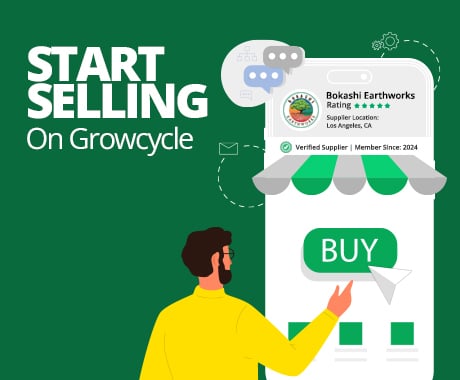Reviews
No reviews found
Description
What is Greensand?
Greensand is a natural mineral from marine sedimentary deposits formed millions of years ago. Its main component, Glauconite, is a greenish mineral packed with potassium (Potash) and iron, making it a highly beneficial addition to your soil. These minerals are slowly released over time, providing long-lasting nutrition to your plants without the risk of over-fertilization or burning sensitive roots.
In addition to its nutrient content, Greensand is valued for its ability to improve soil structure. It is particularly effective at loosening compacted clay soils, enhancing aeration, and improving root penetration. Conversely, Greensand helps increase moisture retention in sandy soils, allowing plants to thrive even in drier conditions. Its unique physical properties make it a versatile and essential amendment for various soil types.
Key Benefits of Greensand
Incorporating Down To Earth Greensand into your gardening or farming routine has numerous benefits. Whether you're growing vegetables, flowers, or trees, this natural soil conditioner can provide your plants with the support they need to flourish.
- Nutrient-rich: Greensand is a slow-release source of potassium (Potash) and iron, essential nutrients for plant growth. Potassium promotes solid roots and improves a plant's ability to resist drought and disease, while iron is critical for producing chlorophyll, ensuring healthy, green foliage.
- Improves soil structure: Greensand's unique physical properties help to loosen heavy, compacted clay soils, making it easier for roots to grow and access nutrients. It enhances moisture retention in sandy soils, reducing water loss and supporting plant health during dry periods.
- Environmentally friendly: This natural soil amendment is free of synthetic chemicals and gentle on plants, making it a sustainable choice for organic gardening and farming. It does not leach harmful substances into the soil or water, preserving the natural ecosystem.
- Long-lasting effects: Unlike quick-release fertilizers, Greensand provides a slow, steady supply of nutrients over time, offering extended benefits throughout the growing season. It works long after application, enriching your soil for future crops.
How to Use Greensand
Incorporating Down To Earth Greensand into your soil is simple. It can be used in various gardening applications, including vegetable gardens, flower beds, lawns, and container gardening. To apply Greensand, spread the recommended amount over your soil and gently work it with a rake or garden tool. For best results, apply Greensand in the spring before planting and again in the fall to prepare your soil for the next growing season.
For use in vegetable gardens and flower beds, apply 1-2 pounds per 100 square feet and work it into the top few inches of soil. For lawns, spread 5-10 pounds per 1,000 square feet to help improve soil structure and promote healthy grass growth. Mix 1-2 tablespoons per gallon of soil in potted plants or container gardening to enrich the planting medium.
Greensand is safe for all types of plants, including fruits, vegetables, flowers, shrubs, and trees. It can also rejuvenate poor soils or enrich compost. Because It is a gentle, natural product, there's no risk of burning your plants or overloading your soil with too many nutrients.
Recommendations
Down To Earth Greensand is an excellent choice for gardeners and farmers looking to improve soil health naturally and sustainably. Its ability to loosen heavy clay soils, improve moisture retention in sandy soils, and provide essential nutrients makes it a versatile amendment that can benefit nearly every type of plant.
For best results, apply Greensand during the planting season and work it into the soil to allow the slow release of nutrients throughout the growing cycle. Regular applications can enhance soil fertility, leading to healthier, more resilient plants. Whether growing vegetables and flowers or maintaining a lawn, Greensand is a natural, long-term solution for improving soil structure and nutrient availability.
If you're committed to organic gardening practices or want to create the healthiest environment for your plants, Down To Earth Greensand is a reliable, eco-friendly option that delivers powerful results.












